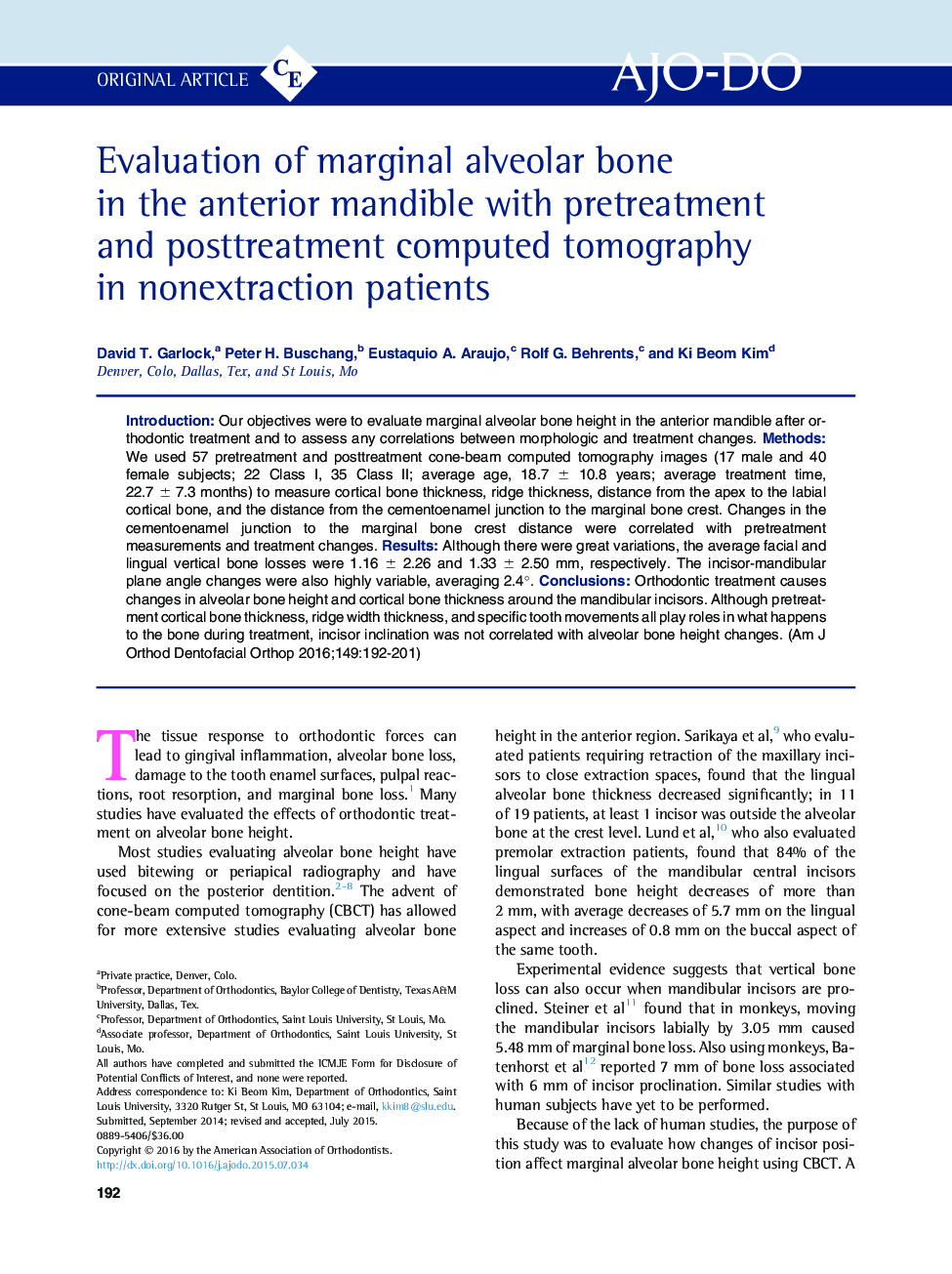| Article ID | Journal | Published Year | Pages | File Type |
|---|---|---|---|---|
| 3115718 | American Journal of Orthodontics and Dentofacial Orthopedics | 2016 | 10 Pages |
•Orthodontic treatment causes changes in alveolar bone height around the mandibular incisors.•It also causes changes in cortical bone thickness around the mandibular incisors.•Cortical bone and ridge width thickness affect bone during treatment.•Incisor inclination was not correlated with alveolar bone height changes.
IntroductionOur objectives were to evaluate marginal alveolar bone height in the anterior mandible after orthodontic treatment and to assess any correlations between morphologic and treatment changes.MethodsWe used 57 pretreatment and posttreatment cone-beam computed tomography images (17 male and 40 female subjects; 22 Class I, 35 Class II; average age, 18.7 ± 10.8 years; average treatment time, 22.7 ± 7.3 months) to measure cortical bone thickness, ridge thickness, distance from the apex to the labial cortical bone, and the distance from the cementoenamel junction to the marginal bone crest. Changes in the cementoenamel junction to the marginal bone crest distance were correlated with pretreatment measurements and treatment changes.ResultsAlthough there were great variations, the average facial and lingual vertical bone losses were 1.16 ± 2.26 and 1.33 ± 2.50 mm, respectively. The incisor-mandibular plane angle changes were also highly variable, averaging 2.4°.ConclusionsOrthodontic treatment causes changes in alveolar bone height and cortical bone thickness around the mandibular incisors. Although pretreatment cortical bone thickness, ridge width thickness, and specific tooth movements all play roles in what happens to the bone during treatment, incisor inclination was not correlated with alveolar bone height changes.
